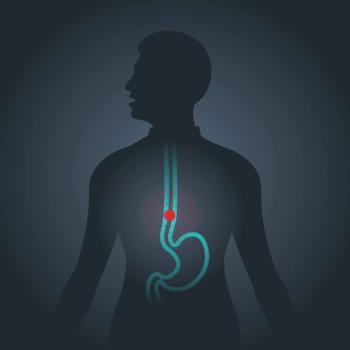
Oncology NEWS International
- Oncology NEWS International Vol 9 No 8
- Volume 9
- Issue 8
Mayo Examines Genetic Influences on Barrett’s Esophagus
SAN DIEGO-Although there are some families that have a high prevalence of Barrett’s esophagus, the disease is more frequently sporadic, Yvonne Romero, MD, of the Mayo Clinic, reported at the annual meeting of the American Gastroenterological Association, held during the Digestive Disease Week conference. She and her colleagues studied symptomatic relatives of Barrett’s esophagus patients to determine if family relationships could help predict the disease.
SAN DIEGOAlthough there are some families that have a high prevalence of Barretts esophagus, the disease is more frequently sporadic, Yvonne Romero, MD, of the Mayo Clinic, reported at the annual meeting of the American Gastroenterological Association, held during the Digestive Disease Week conference. She and her colleagues studied symptomatic relatives of Barretts esophagus patients to determine if family relationships could help predict the disease.
Esophageal cancer is curable if its diagnosed early, but the problem with Barretts esophagus is that symptoms dont necessarily predict it, she said. We wanted to know if family history is a risk factor.
Barretts esophagus, a change in the lining of the esophagus that Dr. Romero likens visually to shag carpeting, can lead to an increased risk30- to 125-foldof esophageal cancer. Symptoms include heartburn or acid reflux at least weekly.
Dr. Romero and her colleagues indexed 140 patients with Barretts esophagus, and asked them to list their living parents, siblings, and adult children. A symptom questionnaire was mailed to the relatives, and those who met the criteria (n = 682) were invited to enter the study.
Of these, 365 had had no previous endoscopy, one of the entry criteria, and 138 had reflux symptoms. The control groups 100 subjects had no known relative with Barretts esophagus or esophageal cancer, and met the same criteria for reflux symptoms. One hundred of the relatives as well as the control group underwent endoscopy using the standard procedure.
The endoscopy results showed Barretts esophagus in eight of the relatives and five of the controls. Seventeen families were identified as having two or more members with Barretts esophagus, 10 of which were found by record review and seven by their endoscopic study. One relative with T1N0M0 esophageal adenocarcinoma was identified during the study and underwent a successful Ivor-Lewis esophagectomy, Dr. Romero said.
We found that increasing age (see Table) and long duration of reflux symptoms more strongly predict Barretts esophagus than a family history of the condition, Dr. Romero said, adding that these findings have implications for screening.
Articles in this issue
over 25 years ago
Scientists Identify Gene Mutations in Multiple Myelomaover 25 years ago
Single-Agent Herceptin Active in Metastatic Breast Cancerover 25 years ago
Brain Metastases Respond to Paclitaxel, Carboplatin, and Brain RTNewsletter
Stay up to date on recent advances in the multidisciplinary approach to cancer.

























































































